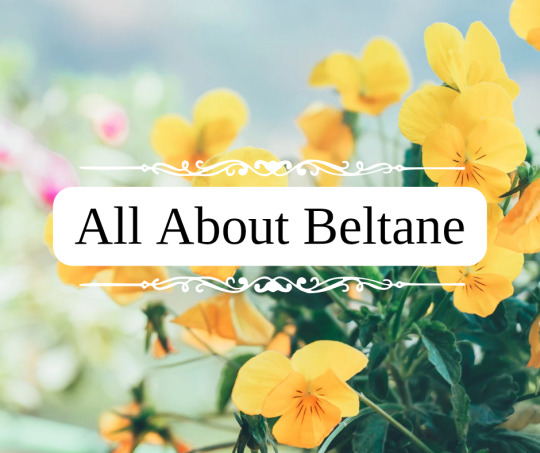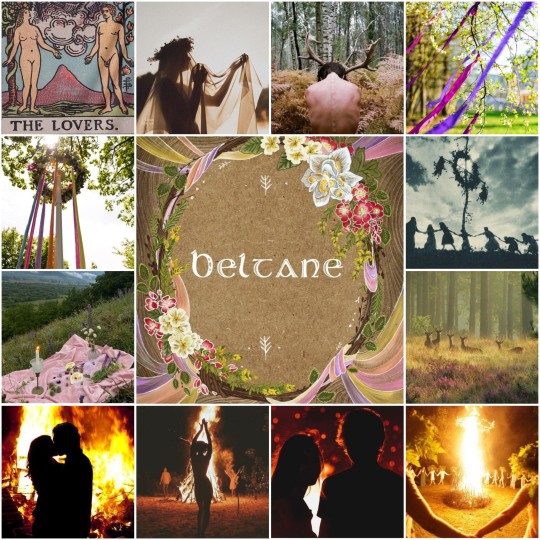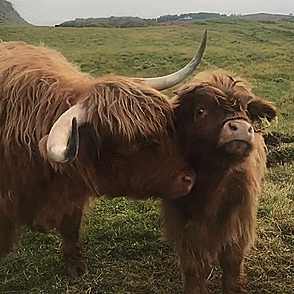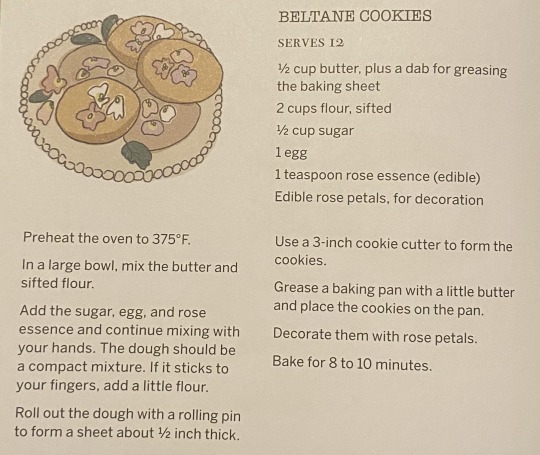#Beltane fire festival
Explore tagged Tumblr posts
Text
April 2024
SW7 Spellcasting Calendar.
April 2024
Day of Empowerment - 4.06.24
SOLAR ECLIPSE - 4.08.24
New Moon - 4.08.24
Angel Summit - 4.13.24
Earth Day - 4.22.24
Lyrid meteors - 4.(22 & 23).24
Full Moon - 4.23.24
Night of the Witches - 4.30.24
All Spellcasting Events
#Magic#Spells#Lyrid meteor shower#Angels#Angel magic#Angel spells#New Moon#New Moon spells#Full Moon#spells for Full Moon#Meteor Shower spells#Meteor Shower magic#easter#easter sunday#spells for easter#Easter#Earth Day#spells for Earth Day#Night of the Witches#solar eclipse#spells for solar eclipse#Beltane fire festival
13 notes
·
View notes
Text

Flames rise, drums call: Beltane burns bright with passion, renewal, and wild earth magic. ❤️🔥✨
#beltane#bonfire#paganism#pagan#pagan witch#paganblr#witch#witchcraft#witchblr#witchcore#pagan wicca#wicca#wiccablr#fire festival#dark aesthetic#nature#nature core#magic#magick#earth magic#flames#whimsigoth#whimsical#rituals#nature lovers#handfasting
154 notes
·
View notes
Text
Blackcrowing's Irish Pagan Festivals Master Post

Samhain Festival
Samhain Authentic Foods
Imbolg Festival
Imbolg Authentic Foods
Bealtine Festival
Bealtine Authentic Foods
Lughnasadh Festival
Lughnasadh Authentic Foods
When is the 'New Year'?
My kofi
Art Credit - Familiar_flower
#lughnasa#lúnasa#lughnasadh#bealtaine#Baltaine#Beltane#imbolg#imbolc#fire festivals#fire festival#irish#irish mythology#irish polytheist#irish polytheism#irish pagan#irish paganism#irish reconstructionism#irish reconstructionist#celtic#celtic mythology#celtic pagan#celtic paganism#celtic polytheist#celtic polytheism#celtic reconstructionist#celtic reconstructionism#blackcrowing#samhain#pagan#paganism
432 notes
·
View notes
Text

48 notes
·
View notes
Text

All About Beltane
Beltane, also known as Bealtaine in Irish, is a Gaelic holiday traditionally held on May 1st or the halfway point between the spring equinox and the summer solstice. It is believed to be named after the Celtic sun god Belenus. It was widely observed in Ireland, Scotland, and the Isle Of Man, and is one of the 4 major Celtic fire festivals. It is mentioned in even the earliest Irish literature and marked the beginning of summer and used as the marker to drive cattle into their summer pastures. Although public celebrations have mostly fallen out after the 20th century and many traditions have been mixed with other cultural holidays (such as the Roman holiday May Day), many Celtic Neopagans and Wiccans still celebrate, and many local traditions still continue, causing it to now get a cultural revival.
Traditionally, rituals were held to protect the livestock that moved pastures, along with crops, dairy products, and people, and to encourage growth. It was also important to appease the Aos Sí, or nature spirits/fairies, which were believed to be more active then.
According to early medieval texts in 908, druids would make two bonfires and drive cattle between them to protect them from disease. In the 18th and 19th centuries, bonfires continued to be an important part of the celebrations. Before the bonfires were lit, all hearth fires were put out, and then relit using the fire from the Beltane bonfires after the celebration.
Continuing into the 19th century, cattle were still driven over or between flames, or sometimes around the fires or made to leap over. The people themselves did as well for good luck and protection. Once the fires died down, people would dab themselves with the ashes and sprinkle them over their crops and livestock. Torches from the bonfires would also be brought home and carried around the home or boundaries, and also used to relight the hearth.
Food was also an important part of the Beltane festival, and usually included a feast of lamb, which, historically, was sacrificed. In 1769, it was written that a hot drink, called a caudle, made of eggs, butter, oatmeal, and milk was served, along with tossing a bit on the ground as an offering. A Beltane Bannock, a type of oatmeal cake, was also written to be important and had a few traditions around it.
In one tradition, the Beltane Bannock had nine knobs on it and each person would take the bannock and face the fire, proceeding to break off the knobs of bannock one at a time and tossing them behind their shoulder as an offering to the spirits for protection over their livestock and from predators (one for the cow, one for the sheep, one for the fox, etc). Afterwards, they would drink the caudle.
According to other 18th century writers, there was another Beltane Bannock tradition where the bannock would be cut into slices and one was marked with charcoal. The slices were then thrown into a bonnet and everyone would take one out while blindfolded. According to one writer, whoever pulled the marked bannock slice had to leap through the fire 3 times. According to another, the person would instead be pretend-thrown into the fire and for some time afterward people would talk about the person as if they were dead. This may have always been symbolic, or it may have been a tradition from a time where actual human sacrifice was used. This tradition was also near identical to May Day traditions that occurred in Wales and other parts of Europe, however.
Other traditions including flowers and plants were also observed, especially ones that evoked fire. Documents from the 19th century cite that yellow and white flowers, such as primrose, rowan, hawthorn, gorse, hazel, and marsh marigold was used and placed at doorways and windows. Sometimes they were strewn into garland, and other times they were made into bouquets, made into crosses, or fastened to them. They were also fastened to cows and milking/butter equipment.
Decorating a May Bush or May Bough was also a widespread tradition, and it usually consisted of a small tree or branch (typically hawthorn, rowan, holly, or sycamore) decorated with bright flowers, ribbons, candles, painted shells or egg shells from Easter, and more. In some traditions they also decorated it with gold and silver May Balls, which were hurling balls, that were then either given out to children or gifted to winners of a hurling match. It was also known as the only acceptable time to cut a thorn tree, as they were associated with fairies and may have also been a relic of worshipping tree spirits. It would either be decorated where it grew, or branches hung over windows, doors, roofs, and barns either inside or outside. Traditionally, it was the responsibility of the eldest of the house to decorate it.
The tree was usually left up until May 31st, but in some traditions it would be burned in the festival bonfire after singing and dancing around it. In Dublin and Belfast, May Bushes were brought into town and decorated by the whole neighborhood, with each neighborhood competing for the most beautiful bush. These competitions could also lead to neighborhoods attempting to steal others May Bushes, which eventually led to the May Bush being outlawed in Victorian times.
Appeasing the fairies was also a big part in Beltane celebrations, with many traditions revolving around offerings to the fairies and also warding them off, as there were many fears around them stealing dairy. One protection tradition was to leave 3 black coals under the butter churn. Another was to hang May Boughs on the milk pails. And yet another was to hang cattle tails in the barns. Flowers were also used to decorate the cattle's horns for good luck.
Farmers would also lead a procession around the boundaries of the farm and would "carry with them seeds of grain, implements of husbandry, the first well water, and the herb vervain (or rowan)", stopping at the four cardinal points of direction starting at the east, and performing rituals towards each direction at each stop. These processions were said to bring protection of their farm produce and encourage fertility. Some people also made the sign of the cross using milk on the backside of cattle for good luck.
As for fairy offerings, one tradition was to pour milk or leave food at places associated with the fairies such as "fairy trees". In Ireland, cattle were brought to "fairy forts" where a small amount of their blood was poured into the earth with prayers of the herd's safety. Sometimes, the blood would be left to dry and then be burnt.
Visiting holy wells was also a popular way to celebrate Beltane. Visitors would walk sunwise, moving from east to west, around the well while praying for health. They would then leave offerings of coins or cloth. The first water drawn from the well on Beltane was thought to be especially potent, and would bring good luck to the person who drew it.
Morning dew on Beltane was also thought to bring goodluck and health, and maidens would wash their face with it or roll in it at dawn or before sunrise on Beltane. It was also collected in a jar, left in sunlight, and then filtered. The dew was said to increase sexual attractiveness, maintain youthfulness, protect from sun damage, and ensure skin health during the ensuing year.
Modern day celebrations may vary from these more traditional festival activities, but many choose to incorporate or take inspiration from the traditions at least. Popular traditions still revolve around bonfires, feasts, decorating a May Bush, and focusing on protection and growth.
Beltane Associations
Colors - yellow, white, red, green
Food - lamb, milk and dairy, beef, bannocks, caudle, cakes
Animals - cattle, sheep, other herd animals
Items - primrose, rowan, hawthorn, gorse, hazel, marsh marigold, holly, sycamore, yellow and white flowers, flower garland, greenery, morning dew, dairy products
Crystals - citrine, fire agate, fire opal, carnelian, red and yellow jasper
Other - protection, fertility, good luck, fire, smoke, ash, sun, bonfires, farming
Ways To Celebrate
light a bonfire
jump over or dance around a bonfire
decorate a May Bush or May Bough
craft and hang flower garland
bake Beltane Bannocks
collect morning dew
create some caudle
ward and protect your home or property
leave offerings for the fairies
focus on protection, growth, and luck magic
enjoy time in the sun
have a feast
create a bouquet out of yellow and white flowers
visit a farm or petting zoo
#beltane#beltaine#bealtaine#celtic#gaelic#irish#scottish#pagan#witch#witchy#wicca#may day#magick#magic#magickal#grimoire#tradition#celebrate#bonfire#fire festival#witchcraft#spiritual#witchblr#witch community#paganism#pagan witch#celtic paganism#paganblr#about#dairy
136 notes
·
View notes
Text

via
70 notes
·
View notes
Text
Beltane, May 1st:
Beltane is a fire festival that honors fertility, passion, and the sacred union between the God and Goddess. Celebrated on May 1st, it marks the height of spring and the approach of summer. It’s a time of blossoming, creation, and life force energy
Rituals we can do this Beltane:
Fire Blessing: Light your favorite candle and whisper your desires, the fire will give you the power
Ritual Bath: Soak in rose petals, lavender, and oils. Adorn your skin like a temple
Earth Offering: Leave honey or flowers under moonlight. Whisper gratitude to the spirits that stir in the soil.
"You are the fire. You are the fertile ground. You are the bloom"
Happy Beltane
#beltane#wheel of the year#fire festival#sea witch#witch#witchcraft#beginner witch#witchythings#witches#moon witch
16 notes
·
View notes
Text

Blessed Beltane 🏵️🌱🌼
#beltane#may day#pagan#wicca#wiccan#first of may#may first#witch#witchcraft#witchy#pagan holiday#fire festival#sabbat#sabbats#spell#spell work#divination#tarot#spring#summer#the goddess#the horned god#fertility#fertility festival#moodboard#witchy moodboard#wheel of the year
70 notes
·
View notes
Text
BELTANE
May Day / Fire Festival

When is Beltane?
It is celebrated on the first day of May, marking the near-beginning of summertime. May 1st is roughly the halfway point between the spring equinox and the summer solstice.
What does Beltane mean?
"Beltane" can be inferred as the Gaelic word for "bright fire." It signifies that the days are growing longer and warmer, and welcomes fertility, life, and love. The veil between the human world and the spirit world has become thin, connecting us to fairies, nature spirits, and the dead.
Who does Beltane celebrate?
One may worship any fertility deity on Beltane, including Cernunnos, the Celtic God of vegetation, fauna, and fertility; Flora, the Roman Goddess of flowers, fertility, and springtime; and Belenus, the Celtic God of the sun, fire, and healing.
----------
BELTANE TRADITIONS
Work with stones that activate the heart and spirit, including rhodonite, rhodochrosite, rose quartz, emerald, and jade.
Use fresh, sweet-smelling flowers and herbs like roses, dandelions, lavender, mugwort, woodruff, and spearmint, all in which promote solace, pain relief, self-love, and spiritual healing. Mugwort may be beneficial to relieving colic and pain during mensuration.
Prepare and consume meals with honey, mint, and lemon, each considered aphrodisiacs. This mix of sweet and refreshing marks the revival of flora and fauna in the warming months. These three ingredients are also relatively hardy and are available year-round, symbolizing vitality and spirit.
Decorate and adorn yourself with soft pinks, greens, whites, and yellows.
Incorporate animal imagery (e.g., figurines, photographs, drawings, et cetera) of birds, cattle, stags, and other creatures associated with crop, fertility and strength.

BELTANE ACTIVITIES
Create and/or wear a flower crown. Use seasonal flowers--especially white, yellow, and orange flowers to represent fire--and decorate your hair with them!
Take a ritual bath: add lavender, coarse salts, mint, and rose petals to your relaxing bath.
Light a fire. Safely light a bonfire and indulge as you would like: sit and chat by the fire, feast over it, or safely dance around it. You could also take a blank sheet a paper, write down one thing you would like to achieve in the year to come, and then toss it into the flames.
Dance around the Maypole. The maypole is a ceremonial folk dance performed to ensure fertility and union. People dance around a tall wooden maypole and weave colored ribbons by walking in a circle in opposite directions from each other.
youtube
Make a Beltane altar. In the center of the altar, add an image/icon of a fertility god(dess) of your choice, and decorate around it with seasonal flowers, bells, burning candles, soft colors, and sugar or honey.
Get creative with recipes! Carlota Santos, who is the author of Magika, recommends drinking freshly made lemonade and baking buttery sugar cookies!
Carlota Santos’ Beltane Cookie Recipe

#I cannot believe that it is already May#witchblr#witchcraft#beltane#celtic paganism#may day#maypole#fire festival#Belenus#God of sun and fire#Youtube
67 notes
·
View notes
Text
How to Celebrate Beltane Discreetly
Just a list of some ideas from someone who's been discreetly celebrating pagan/witchy holidays for about four? Five? Years on and off.
I don't practice all of my suggestions because I live in a strict home, but I did try and include some ideas that are do-able in more lenient living situations.
Please reblog and add any suggestions that I didn't think of!
Wear firey/bright colors to emulate Beltane's fire festival properties.
Create a Poem or two in honor of Brigid
Listen to music with "poetic" vibes or "fiery" vibes
If you're able to-- light some candles or burn incense. Battery operated candles can also be a perfect substitution!
Cook a nice stove-top meal (the flames of the stove can symbolize the flames of Beltane).
If you can't use a stove but like spicy food, maybe try and get some spicy treats and treat the heat of the spice as being symbolic of Beltane's flames!
Meditate to the sound of crackling flames. Or just meditate in general!
They say the veil between worlds is thinnest on both Beltane and Samhain... Sooo I like to wear a head covering when I go out (and it can be as simple as a bandana or a headband!)
I also like to sit and listen to windchimes, ring bells, and admire my suncatcher because they capture the "otherworldly" vibes Beltane can bring!
If you can, have a bonfire! You can always invite friends/family and have a party but use the time to secretly admire the flames.
I am an absolute weirdo so one of my favorite nighttime activities in place of a bonfire is to sit in my pitch-black room at night and chant some of the poems I made earlier in the day!
Don't feel bad if you can't do any of them for any reason. What really matters is you're here and doing your best to carry on <33
Blessed Beltane!
#beltane#happy beltane!#paganism#pagan#paganblr#pagans of tumblr#celtic pagan#witchcraft#witchblr#witch#witchy#celtic paganism#witches of tumblr#closeted pagan#closeted witch#pagan worship#fire festival
53 notes
·
View notes
Text
Guys I don’t think you understand how excited I am for this years Beltane festival !!!
I’m going with a bunch of my friends :)
#fattfemme yaps:)#im so excited#i love my friends#aaaaaahhhhhhhhh#unfortunately everytime I go my mum says she wants me to come back with a pagan boyfriend????!!#LADY WHAT DO YOU MEAN LEAVE ME ALONE#beltane#Beltane fire festival#celtic paganism#pagan holidays#paganblr#pagan witch#paganism#pagan#pagans of tumblr#pagan community#lesbian#sapphic#femme lesbian#fat femme#femme#lesbian bait#lesbianism#lesbian yearning
9 notes
·
View notes
Text








How it feels to be from a culture with a fire festival
Moodboard for my next Substack post exploring the parallels between Beltane and Chaharshanbeh Soori
6 notes
·
View notes
Text
Fire. Fertility. Chaos. How Scotland Is Reviving An Ancient Pagan Ritual
This Celtic Celebration of Fire and Fertility Culminates in The Marriage of The May Queen and The Green Man—and The Arrival of Summer.
— By Rebecca Crowe | April 23, 2025

Flames rise behind a performer at the Beltain Celtic Fire Festival in southern England. Events like this—and Edinburgh’s Beltane Fire Festival—draw on centuries-old traditions that once marked the changing seasons across the Celtic world. Photograph By Andrew Matthews, PA Images, Getty Images
Each spring, on the night of April 30, thousands gather on Edinburgh’s Calton Hill to welcome the return of summer—with fire. Performers dressed in dramatic costumes move through the crowd, reenacting ancient rituals to drums and chants echoing across the city.
The crowd—locals and tourists alike—comes for the Beltane Fire Festival, Britain’s largest modern celebration of an ancient tradition that honors fire, fertility, and the changing season. Revived in 1988 by a group of artists and volunteers, the festival has grown into a high-energy spectacle rooted in tradition but shaped by modern values.
So how did a nearly forgotten pagan fire ritual become one of Scotland’s most iconic annual events?
What Are The Origins of Beltane?
Beltane (Pronounced BEL-tayn) is one of eight seasonal festivals in the Celtic Calendar, Alongside Samhain, Yule, Imbolc, Ostara, Midsummer, Lughnasadh, and Mabon. Its roots stretch back centuries across Scotland, Ireland, Wales, and the Isle of Man.

Costumed performers prepare for the Beltane Fire Festival in Edinburgh. The annual event blends ancient Celtic rituals with modern performance, drawing thousands to Calton Hill to mark the arrival of summer. Photograph By Jim Richardson, National Geographic Image Collection

Blue-painted participants represent the “Blues,” the ritual guardians of the Beltane Fire Festival. As the festival’s elders, they lead the procession, uphold tradition, and maintain order amid the chaos during the celebration. Photograph By Jim Richardson, National Geographic Image Collection
Beltane translates to “bright fire,” which is central to the festivities. It celebrates the coming summer sunshine months and the fertility of nature, including the people and livestock that come from the changing seasons.
Historically, everyone in the community would have to put out their individual home fires, and a grand bonfire, known as a “need-fire,” would be lit in the community space. Part of this ritual would include driving cattle between two central “need-fires” to protect their health for the season ahead. After this protection ritual was completed, music, dancing, and drinking would continue late into the night.
“Beltane has long been an important part of Scottish traditions and culture since the pre-Christian/Anglosaxon colonization of the land,” says Romaine Furmston-Evans of the Beltane Fire Society. “When these takeovers occurred in history, traditions like Beltane were adopted by the dominant culture and shifted to suit their means. So, the celebration never really stopped; it was just altered and often renamed. In Beltane’s case, it became May Day.”
The History of Edinburgh’s Beltane Fire Festival

Fire purges winter during Edinburgh’s Beltane Fire Festival on Calton Hill. The May Queen leads a ritual of renewal, as performers reenact the seasonal rebirth of the Green Man before a crowd of thousands. Photograph By Kieran Dodds, Redux
Although the repression of paganism and traditional festivals continued throughout the 19th and 20th centuries, Beltane didn’t disappear entirely. In 1988, a group of performance artists resurrected the festival’s spirit on Calton Hill. Still run by community volunteers today, the event has grown from a small audience of about 50 in its first year to roughly 10,000 by 1999.
Ross Tinsley, a lecturer at Edinburgh Napier University who has researched Beltane extensively, says, “the group who resurrected it were seeking a release from struggles against the dominant political landscape of Thatcherism.”
Historically, the Beltane celebrations would���ve been celebrated on the slopes of Arthur’s Seat. But because this land is crown-owned—and given the political symbolism—organizers chose Calton Hill, a space known in the 1980s for its connection to queer counterculture.
The story of the May Queen and the Green Man is at the heart of the modern festival. The May Queen is almost a Mother Earth figure, representing nature. The Green Man tries to get the attention of the May Queen throughout the festival but isn’t successful until he shrugs off his winter coat and embraces the new season. The culmination of the festival is the marriage of the two and the start of summer.
As the narrative unfolds, other characters representing aspects of nature join the performance. The Whites, attendants of the May Queen, embody her emotions and energy. The Blues, elders of the festival, uphold tradition and order. The wild and unpredictable Reds represent nature’s chaos and carnality—and often disrupt the other groups. These roles unfold across Calton Hill over four hours, creating an immersive, interactive experience.
Beltane’s Revival
Beltane’s rise in popularity is about more than spectacle. “We are currently seeing a resurgence of embracing indigenous cultures across the world,” says Furmston-Evans. “This is part of Scots reclaiming our heritage.”
In part, Beltane’s popularity reflects a growing desire to reconnect—with each other, the natural world, and rhythms that feel older than modern life. “This growth can be seen as a reflection of dissatisfaction with more traditional religion and with the pace of contemporary Western society,” says Tinsley.
According to the Beltane Fire Society website, “The motives behind Beltane are the search of a human primal nature, the need to reconnect with land and nature, the contraposition of the chaotic and wild movements of the elements of life and nature in opposition to the over rationality and disciplinarian order of the central state at that time.”
“Beltane is a festival of hope for brighter times ahead,” says Furmston-Evans, something many find comfort in during uncertain times.
#Cultural Conservations#Summer#Traditions#Festivals#Fire. Fertility. Chaos.#Scotland 🏴#Reviving | An Ancient Pagan Ritual#Celtic Celebration#Culmination#Marriage#May Queen | The Green Man#Arrival of Summer#Origins of Beltane#Celtic Calendar#Samhain | Yule | Imbolc | Ostara | Midsummer | Lughnasadh | Mabon#Edinburgh’s Beltane Fire 🔥 Festival#Beltane’s Revival
5 notes
·
View notes
Text
Blessed Beltane to everyone that celebrates, and also to those that don’t but still deserve the love 💛
#Beltane#Beltane 2024#blessings are abundant#the haar has covered my city but the fire festival went well last night#and there will be people up the mountain today celebrating
7 notes
·
View notes
Text

Good morning and happy Beltane ( Latha Buidhe Bealltainn ) from here in Scotland. To all my family and friends near and far who'll be celebrating today, have a blessed day. 🏴
#beltane#blessed day#blessed beltane#1st of May#scotland#scottish#festival#fire festival#celebrate#🏴
8 notes
·
View notes

